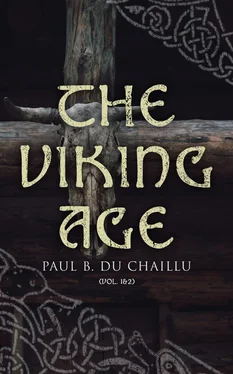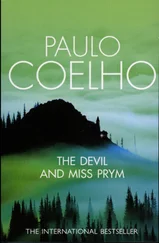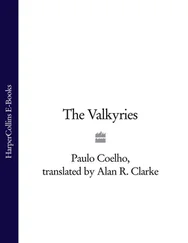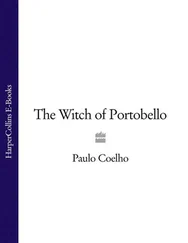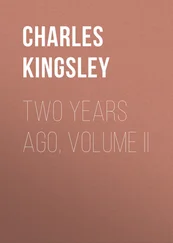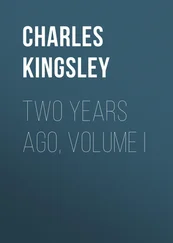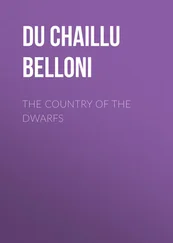The irregular lines show the position of the slabs covering the grave.
The passage graves vary much in size. The length of the chamber is generally from 11½ to 23 feet, its width from 5 to 10 feet; height from 3½ to 4½ feet. The passage is often as long as the chamber, or even longer, and its width is from 2 to 4 feet, and height from 3 to 5 feet. But some are much larger, and are called giants’ graves. One of the largest of these graves is that of Karleby, near Falköping, Vestergötland, in Sweden, where a great number of the graves of the stone age have been found.

Fig. 11.—Stone coffin (hällkista) near Skattened, in Södra Ryrs parish, Vestergötland, 21¼ feet in length. Graves of this type are very numerous in Bohuslan also, and in Dal and south-western Vermland.
This grave 112was found under a large but not very deep mound, and is divided into a large chamber and two smaller ones, separated by stone slabs.
In it were remains of sixty skeletons, and by their side a large number of poniards, spear-points, arrow-heads, and other objects of flint and stone, showing that the grave belonged to the period when stone implements were still in use; but among the skeletons in the lower part of the grave a couple of bronze beads and a bronze spear-point were found.

Fig. 12.
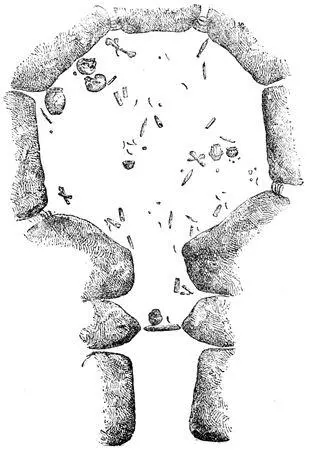
Fig. 13.—Plan of above Mound.
Mound, Broholm. Sepulchral chamber made of boulders, with short passage leading to it. Stones from 4 feet 15 inches to 4 feet high, and 2½ to 4 feet wide; inside of the chamber 9 feet wide. Only four stones remain of the passage leading to the chamber, which is about 2 feet wide, and turns south-west. The space between the boulders is filled with small stones. In the chamber were charcoal and different things. To the left of the entrance lay remains of two skulls close to each other; and spread in every direction were daggers, blades, and points of spears, points of arrows, numerous amber beads, a necklace of amber, four clay vessels, and fragments of others, &c.
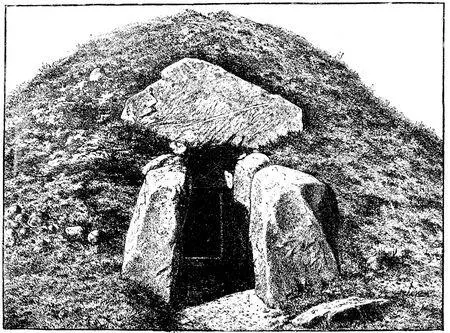
Fig. 14.—Entrance to passage grave at Uby, Holbæk amt, Denmark. Diameter 100 feet, height 14 feet. The length of the chamber is 13½ feet, width 7½ feet, height 7½ feet. Entrance towards the south passage is 18 feet long, 2½ feet wide, and 5½ feet high. There were found in the passage many human bones and several flint implements and three small clay urns.
The isolated stone coffins were formed of flat upright stones, and were four-sided, though the two longer sides were not parallel, thus making the coffin narrower at one end than at the other. Most of them were probably covered with one or more stones; and although these have in many places long ago been destroyed or removed, they are sometimes still found in their place. The direction of these coffins is almost always from north to south, and they are generally surrounded by a mound of stones of more or less stone-mixed earth. This form of grave was probably the outcome of the omission of the passage. Several intermediate forms have been found, showing how the passage was gradually lessened until it can only be traced in the opening which narrows at the south end of the coffin.

Fig. 15.—Interior of the passage grave at Uby. The spaces between the large stones filled with pebbles. The roof is formed by two large stones which have been cut from a large block.
The length of the stone coffin was generally from 8 to 13½ feet, width from 3 to 5 feet, height from 2½ to 5 feet. A few, especially in Vestergötland, are from 19½ to 31 feet in length, one of the longest graves of this kind in Sweden being one on Stora Lundskulla, in Vestergötland, with a length of 34 feet, and width of 8 feet. Nearly all other stone coffins found are, like the gallery graves, without a stone at the southern end. This cannot be accidental.
Besides the stone coffin above described, several have been found covered with a mound. The chambers are generally formed of upright flat stones, and roofed also with stones. They are generally smaller than the stone coffins, being from 6 to 10 feet long, and closed on all four sides; sometimes, however, there is found in the southern end an opening as previously mentioned.
POTTERY.
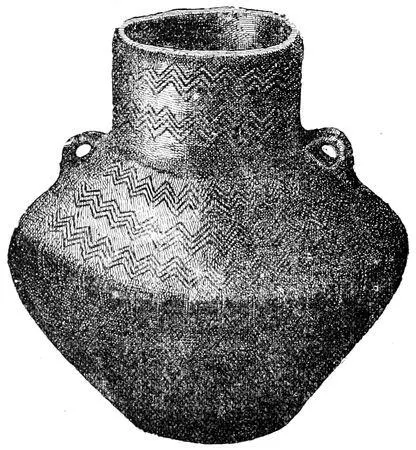
Fig. 16.—Clay urn—Stone age—⅓ real size. In passage grave, Stege, island of Möen, Baltic, found with remains of some skeletons. Two stone axes, a flint saw, 2 arrow-points, 3 spear-heads, fragments of clay vessels with covers, pieces of a wooden tub, 2 awls of bone, a chisel of bone, 3 flint wedges, 2 flat scrapers of flint, and 17 amber beads for necklace were also found in the grave. The same mound was afterwards used for burials belonging to the bronze age, with cinerary urns with burned bones, on the top of which was a double-edged bronze knife, &c.

Fig. 17.—Amber-beads forming a necklace found in the grave with the clay urn.
The same mound was afterwards used for burial belonging to the bronze age; near the top, and entirely separate from the burial-chambers, there was discovered a very small stone coffin containing an urn with burnt bones, and on these lay a fine double-edged knife, a knife, and a pair of pincers, all of bronze.

Fig. 18.—Clay vessel found near Fredericia, Jutland. ⅓ real size.
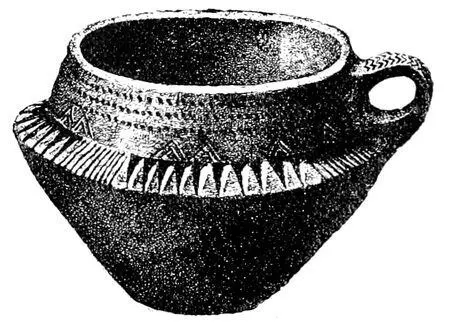
Fig. 19.—Clay urn. Stone age grave, with flint weapons and amber-beads. ⅓ real size. Island of Möen.
POTTERY OF THE STONE AGE.

Fig. 20.—Necklace of amber beads found with other amber beads and ornaments, altogether about 2,500, in a bog at the hamlet of Lœsten, Viborg amt, Jutland. ¼ real size.
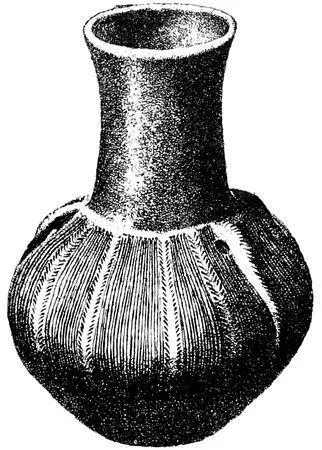
Fig. 21.—Clay vessel which had a top, Stone age. ⅓ real size.—Möen.

Fig. 22.—Stone axes, of the form of some bronze axes. Several specimens in the Copenhagen Museum. ⅓ real size.—Fyen.
Читать дальше
